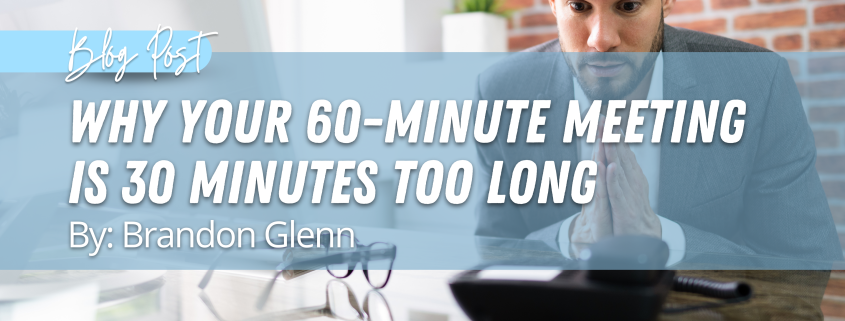We’ve all been there – sitting in a meeting that could have easily ended a half-hour ago – but for some reason, the meeting just crawls on and on.
One person may go off on a tangent that may be mildly interesting but has no relevance to the meeting’s objectives. Another person may ask a question that they would have already known the answer to if they were paying attention five minutes earlier. Yet another may deliver a 5- or 10-minute monologue that only has relevance to one other team member at the meeting and could have more easily and efficiently been handled via one well-written email.
Regardless of the reason, business meetings too often turn out to be a waste of time and resources. That was a major conclusion of the book “The Surprising Science of Meetings,” written by Steven G. Rogelberg, a professor at the University of North Carolina – Charlotte and perhaps the world’s “leading expert” on business meetings.
“Poorly conducted meetings clearly hurt leaders, teams, departments, and organizations,” Rogelberg writes. However, that is not to say that meetings should be eliminated. In some cases (when performed properly), meetings are a necessary means of exchanging ideas, arriving at decisions, and keeping team members informed.
Most companies view bad and unnecessary meetings as an inevitable cost of doing business, but it doesn’t have to be that way. It’s simply a question of making meetings more productive and valuable to all participants – and a big part of that is choosing the right length of time.
Meetings in Corporate America: Too many and too long
On an average day in the U.S., 55 million meetings occur, according to Rogelberg’s research. That represents five-fold growth over the 11 million daily meetings that happened in 1976, according to a Harvard Business Review estimate.
Today, on average, non-managers attend eight meetings per week, while the number for managers climbs to 12. Chief executives may spend a whopping 60% of their time in meetings, according to Rogelberg.
Though most of us may prefer not to think about it, there is a time and cost associated with every meeting. An estimate by Xerox once found that meetings among its 24,000-employee development team cost the company over $100 million a year. Separately, an estimate from Lucid Meetings found that the U.S. spends $1.4 trillion per year on meetings, or roughly 8% of the nation’s annual gross domestic product.
Despite all this expense and investment, meetings often fail to accomplish much of anything productive – just ask the attendees. A 2014 survey of nearly 2,100 U.S. adults found that nearly half of respondents would rather do anything unpleasant, such as standing in line at the DMV or watching paint dry, than attend a status meeting. Further, more than one-third of respondents said status meetings are “a waste of time.”
Separately, a 2005 Microsoft survey of 40,000 global workers found that 69% said their meetings were unproductive.
30 minutes is the magic number
It’s all enough to make one ponder: If so many of us seem to agree that corporate America spends too much time in meetings that often fail to accomplish their objectives, then why don’t we cut down on the amount of time we spend in meetings? Judging from a couple of Google searches, I’m not the only one.
Luckily, there’s a simple way to reduce the amount of time we all spend in meetings: Never allow them to exceed 30 minutes.
Plenty of other meeting-weary attendees have come to the same conclusion:
- “Scheduling meetings for more than an hour is non-productive,” writes Time Management Ninja. “You lose people’s interest, energy, and attention. Even worse, meetings will always expand to fill the allowed time.”
- “I maintain if individual prep work is done beforehand by each participant and the meeting starts on time and stays on focus, everything included in a reasonable hour-long agenda could well be covered in 30 minutes with plenty of time for meaningful, yet not excessive banter,” says Nate Towne on LinkedIn.
- “I believe that all meetings should be 30 minutes or less,” writes Tessa Palmer on Medium. “And not a second longer. If you can’t say what you’re going to say in half-an-hour, then you’re doing it all wrong.”
While doing away with hour-long meetings might seem like a dramatic shift to some, I believe it is more doable than many of us assume. Instead of hour-long meetings, try 15 – 20 minute huddles, SparkHire suggests. Come prepared with an agenda, ask attendees to brainstorm ideas by themselves ahead of time (a technique known as “brainwriting” that I’ve previously advocated), limit the number of participants to only those absolutely necessary, and start with what’s important.
So next time you’re tempted to send out a notice for a 60-minute meeting, pause, take a deep breath, and think about what you could do beforehand to cut that time in half. Your teammates will undoubtedly appreciate it.
